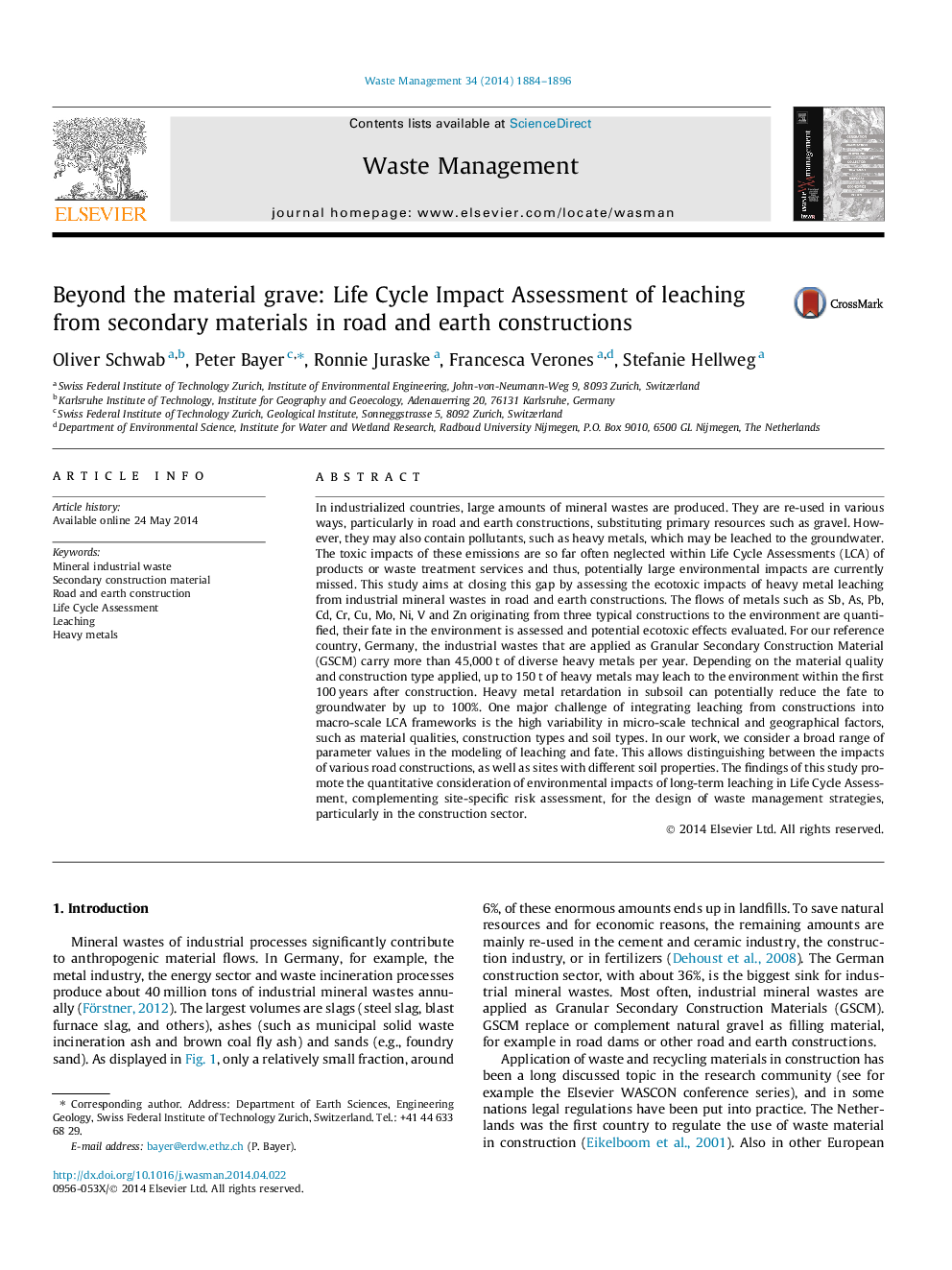| کد مقاله | کد نشریه | سال انتشار | مقاله انگلیسی | نسخه تمام متن |
|---|---|---|---|---|
| 4471532 | 1315031 | 2014 | 13 صفحه PDF | دانلود رایگان |
• We model environmental impacts of leaching from secondary construction material.
• Industrial wastes in construction contain up to 45,000 t heavy metals per year (D).
• In a scenario, 150 t are leached to the environment within 100 years after construction.
• All heavy metals but As, Sb and Mo are adsorbed by 20 cm subsoil in this scenario.
• Environmental impacts depend on material, pollutant, construction type, and geography.
In industrialized countries, large amounts of mineral wastes are produced. They are re-used in various ways, particularly in road and earth constructions, substituting primary resources such as gravel. However, they may also contain pollutants, such as heavy metals, which may be leached to the groundwater. The toxic impacts of these emissions are so far often neglected within Life Cycle Assessments (LCA) of products or waste treatment services and thus, potentially large environmental impacts are currently missed. This study aims at closing this gap by assessing the ecotoxic impacts of heavy metal leaching from industrial mineral wastes in road and earth constructions. The flows of metals such as Sb, As, Pb, Cd, Cr, Cu, Mo, Ni, V and Zn originating from three typical constructions to the environment are quantified, their fate in the environment is assessed and potential ecotoxic effects evaluated. For our reference country, Germany, the industrial wastes that are applied as Granular Secondary Construction Material (GSCM) carry more than 45,000 t of diverse heavy metals per year. Depending on the material quality and construction type applied, up to 150 t of heavy metals may leach to the environment within the first 100 years after construction. Heavy metal retardation in subsoil can potentially reduce the fate to groundwater by up to 100%. One major challenge of integrating leaching from constructions into macro-scale LCA frameworks is the high variability in micro-scale technical and geographical factors, such as material qualities, construction types and soil types. In our work, we consider a broad range of parameter values in the modeling of leaching and fate. This allows distinguishing between the impacts of various road constructions, as well as sites with different soil properties. The findings of this study promote the quantitative consideration of environmental impacts of long-term leaching in Life Cycle Assessment, complementing site-specific risk assessment, for the design of waste management strategies, particularly in the construction sector.
Journal: Waste Management - Volume 34, Issue 10, October 2014, Pages 1884–1896
